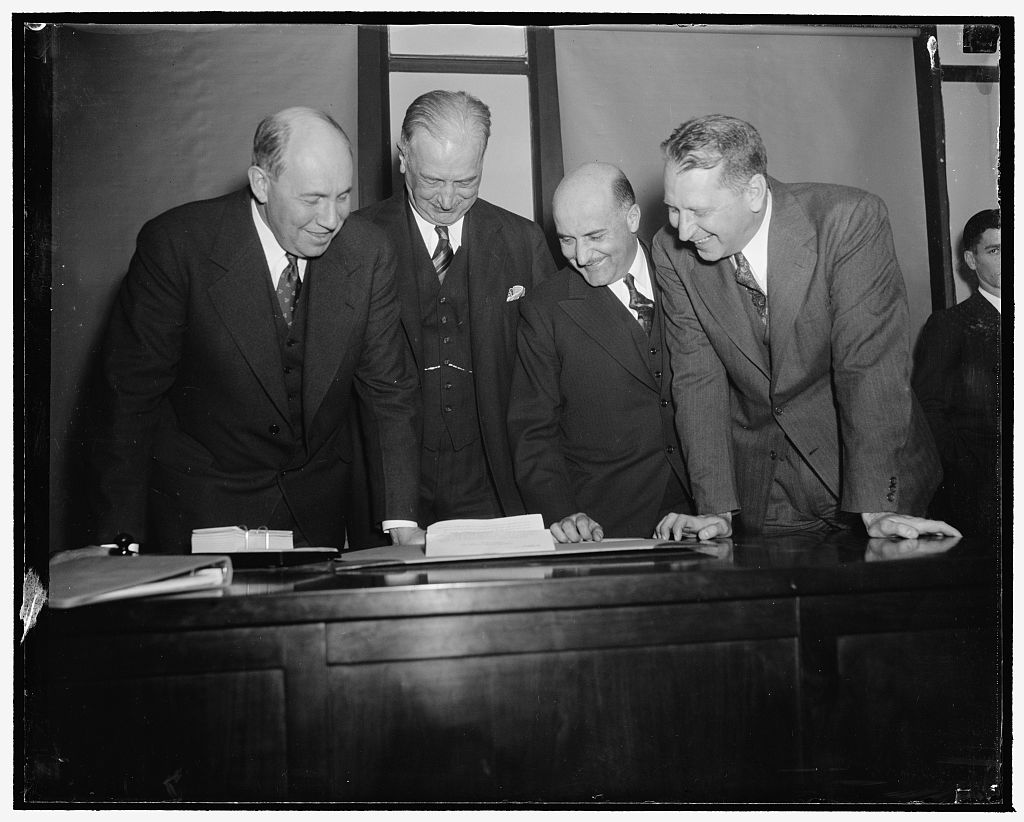Francis I. duPont & Co. Genealogy: Part XV
Walston & Co., Inc.
Ford Motor Company Syndicate #52
Founded 1932, San Francisco
Origins
Vernon C. Walston (1906-1964) was born in Oklahoma. His father, William H. Walston, was a farmer and Kentucky native. By 1920, Walston's family moved to California, where his father ran a laundry and dry cleaner and his mother, Alvina, a Kansas native, worked as manager. Walston was raised in California, where he was educated in public schools. When Walston was about 18 years old, he became a clerk in a branch office of the Bank of Italy. There, he eventually became the secretary and a protégé of Amadeo Peitro/Peter (A.P.) Giannini (1870-1949), the bank's founder.
In 1931, Walston married Nella Bernardelli de Magri (1905-1992), who was a native of Genoa, Italy. Nella immigrated to the United States via New York in 1915 with her mother and brother at the age of nine. The family settled in California, where Nella eventually began working as a bank clerk. The year after they married, Walston founded Walston & Co. in San Francisco.
Walston & Co. (founded 1932)
The early history of Walston's firm was closely tied to that of A.P. Giannini and his family. Born in San Jose, California, A.P. Giannini was the son of Italian immigrants from Genoa, Italy. His father, Luigi Giovanni Giannini (1840-1877), arrived in California in the 1850s or early 1860s and was a hotel proprietor and produce farmer. After Luigi was tragically killed by a disgruntled farm worked in 1877, Giannini's mother remarried. In 1885, Giannini began working as a clerk in the produce firm of his stepfather, Lorenzo Scatena, also a native of Genoa. According to the Independent Record, Giannini "quickly built up the largest commission house in California, but he went into banking when his father-in-law, a banker, died and left him a seat on the board of a San Francisco bank."
Capitalizing on the outstanding economic growth of the state of California in the early 20th century, Giannini founded the Bank of Italy in 1904, and it grew into the third-largest American bank in 1927 with "276 branches in 199 California towns and cities and nearly $750 million in assets." In 1928, Giannini bought the controlling interest in the Bank of America, a descendant of the Second Bank of the United States (founded 1812). In the 1930, Bank of Italy was merged into the Bank of America, creating a network of 438 banks that was "the largest of its kind in the United States."
In 1939, the Securities and Exchange Commission began an investigation into stock pool operations of Transamerica Corporation, a bank holding company that Giannini had established in 1928, which was led by his son, Virgil David (1899-1938). During the SEC investigation, it came to light that the funds for the establishment of the Walston firm came from Giannini's family. Walston & Co. "admitted in a Securities Commission hearing today most its funds were 'Giannini money,' but denied Giannini interests or 'anyone but general partners' controlled the business." The SEC brought charges against the firm that it filed "false and misleading" registration states and "that they concealed true ownership of the firm." Walston & Co.'s defense was to claim that the SEC and the Securities and Exchange Act of 1934 were both unconstitutional and that the SEC was "overstepping its authority in taking jurisdiction over matters which 'are no part of interstate or foreign commerce.'"
The early makeup of Walston's firm gave credence to the speculation of the firm's leading interests because Giannini's son-in-law, Clifford P. Hoffman, and Giannini's family lawyer, Charles de Young Elkus, were also members of the firm. Vernon Walston testified that the money for the firm came from partner Hoffman, who had borrowed it from his wife, Claire, who was A.P. Giannini's daughter. But the firm denied that Virgil Giannini had ever been partner in the firm. The commission, however, found that Virgil Giannini had provided $120,000 of the firm's capital and had "owned 70 to 90 percent of the Walston firm, but resorted to 'elaborate stratagems' to conceal his interest." The SEC ruled against the firm, stating that the partners "were mere 'fronts' for the Giannini banking interests on the West Coast, but sought to hide this relationship." The firm was suspended from the stock exchange for six months.





Comments
Post a Comment